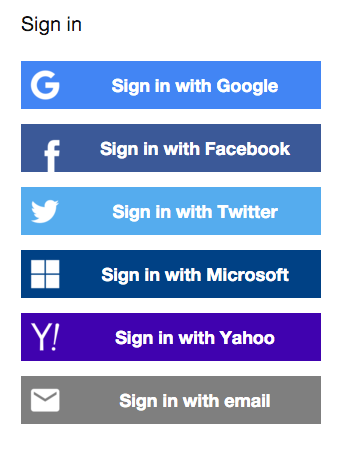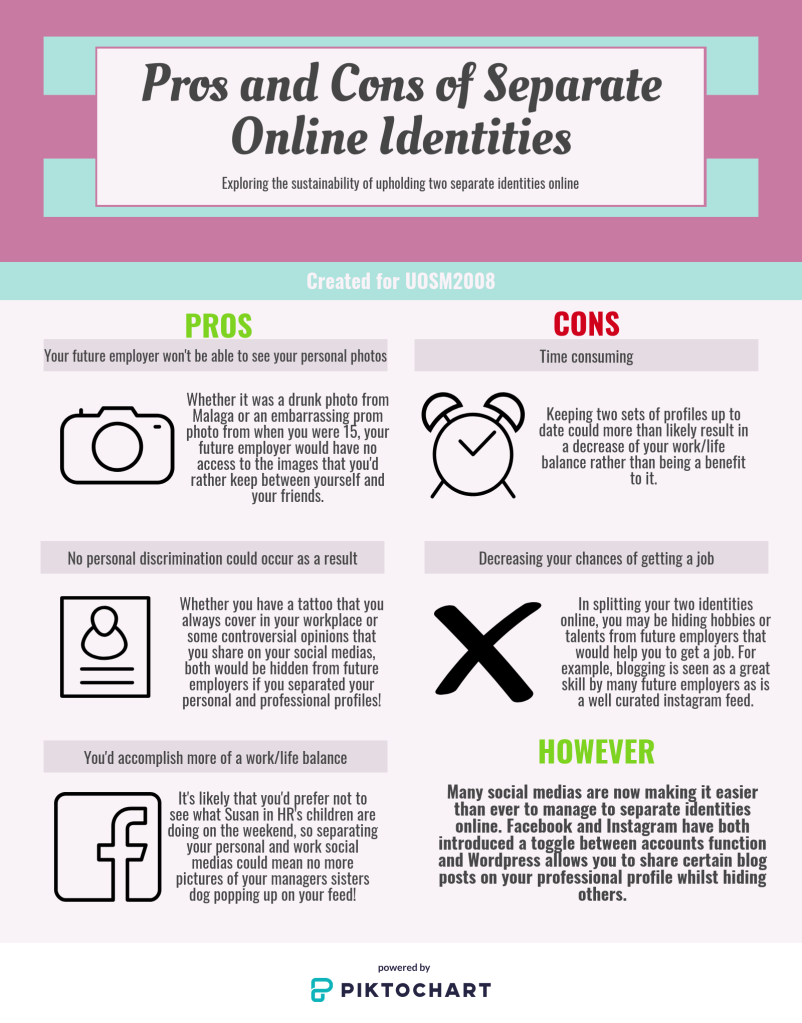
Topic 3: Singular vs. Multiple Online Identities
What is an Online Identity?
60 billion online identities in today’s World (Versace, 2014), but what does it really mean to hold one? The short introductory video below aims to summarise some definitions and terminology.
Dekkers (2018) created using the software Powtoon
Information from Costa and Torres (2011)
Making informed decisions is crucial when establishing your first or an additional online identity and it is personal preference that determines how many to possess.
Continue reading →








